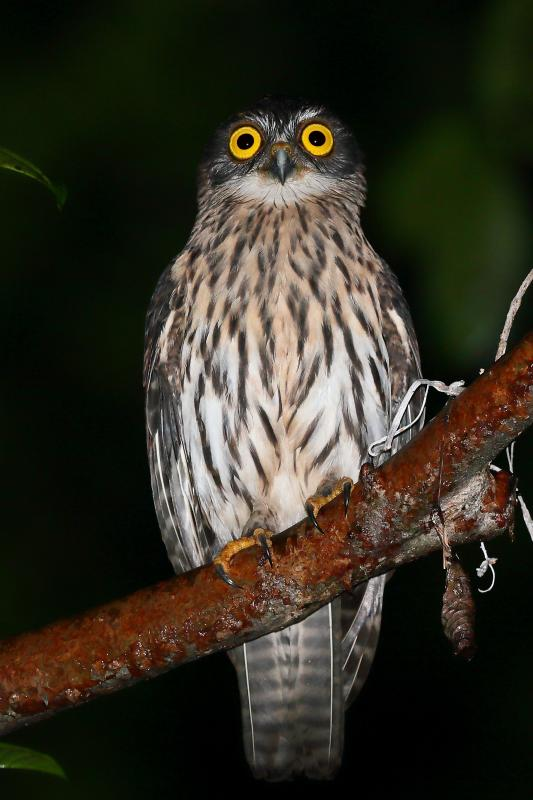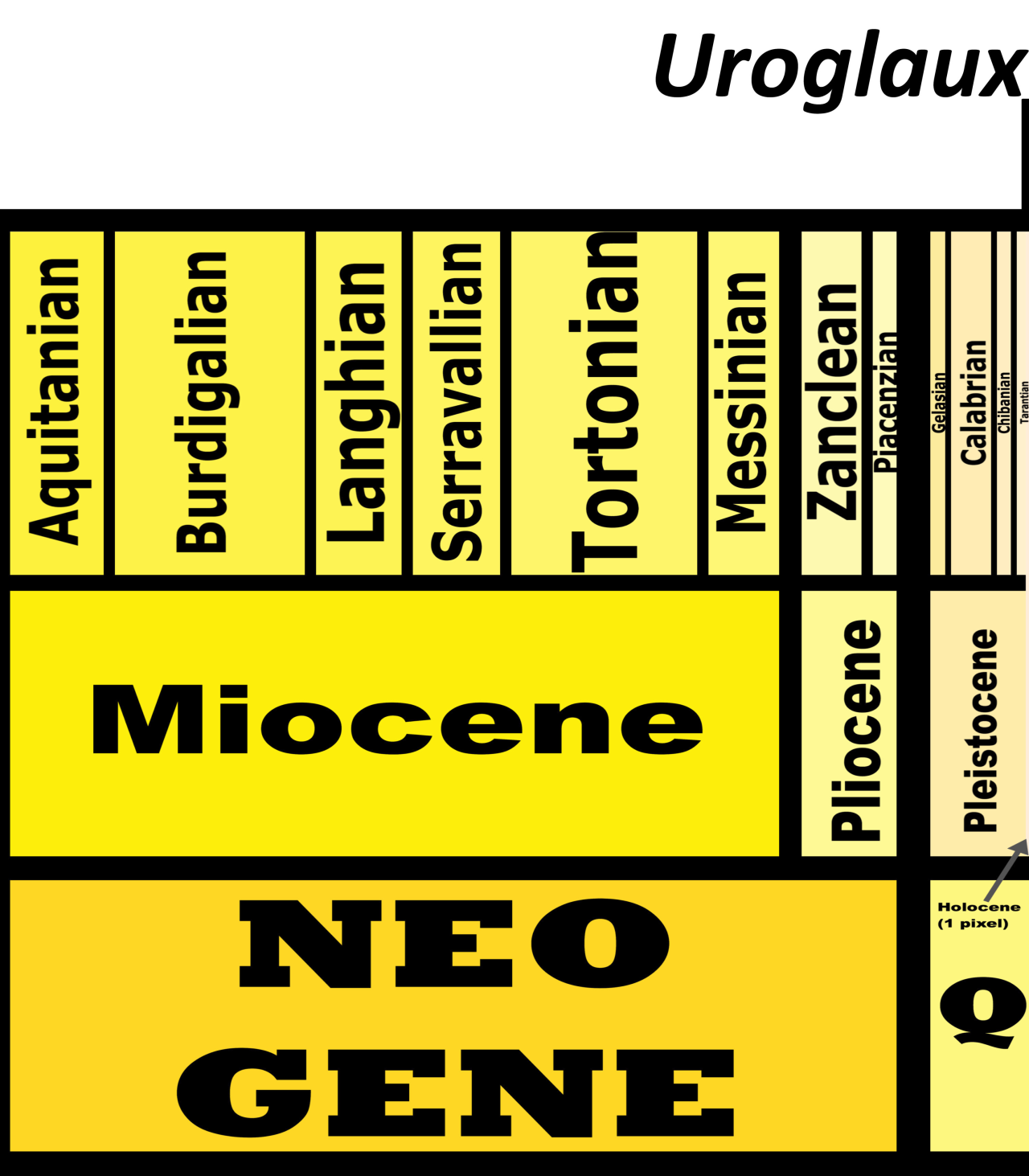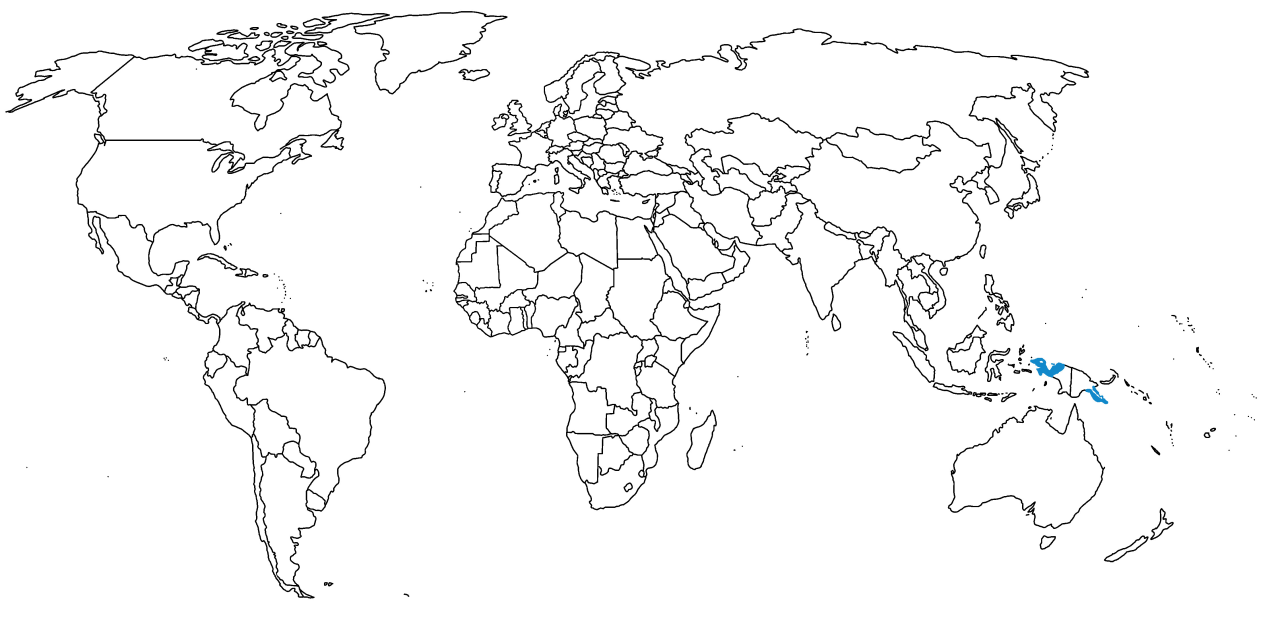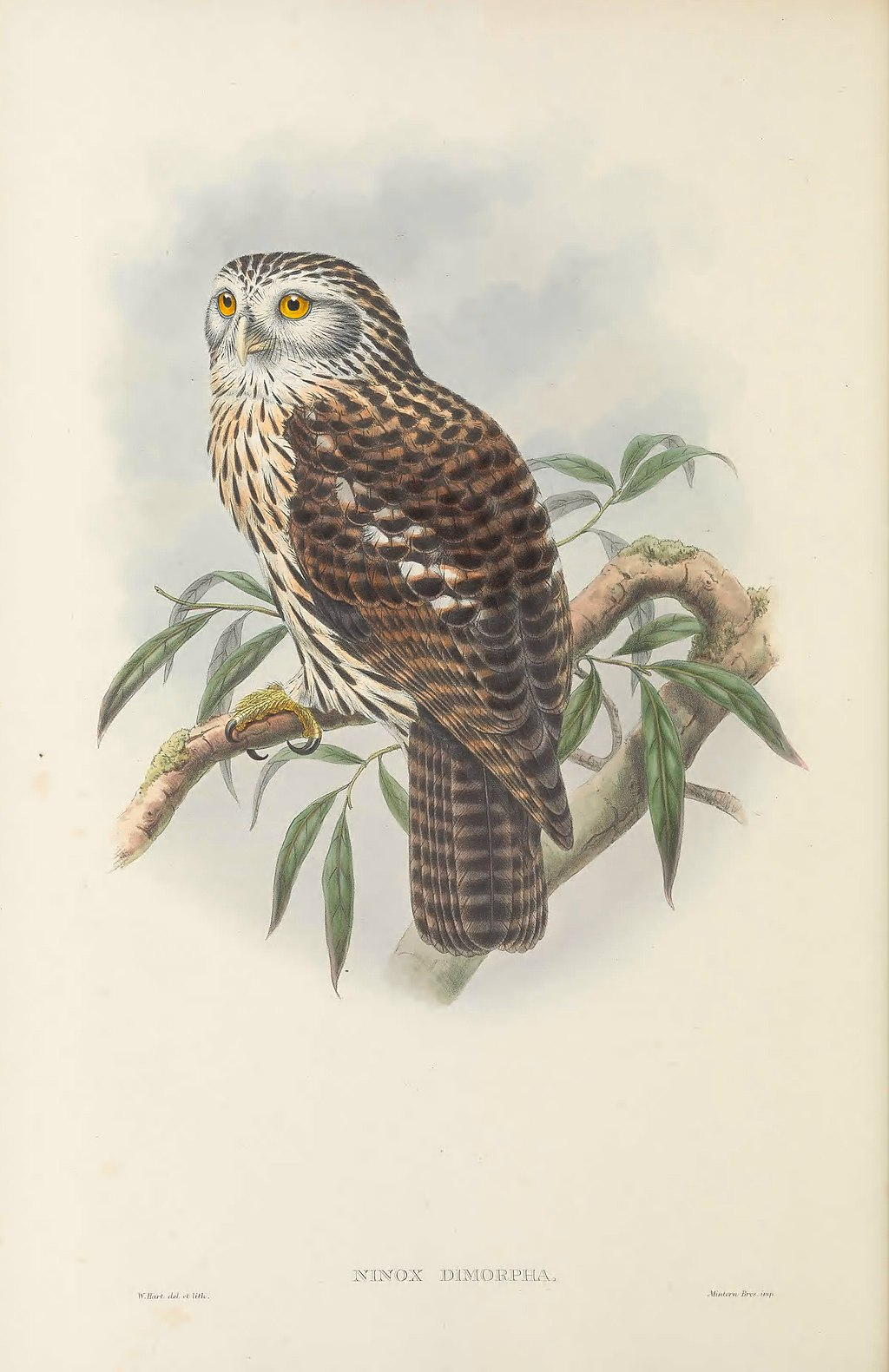Uroglaux dimorpha

By Carlos N. G. Bocos
Etymology: Tailed Owl
First Described By: Mayr, 1937
Classification: Dinosauromorpha, Dinosauriformes, Dracohors, Dinosauria, Saurischia, Eusaurischia, Theropoda, Neotheropoda, Averostra, Tetanurae, Orionides, Avetheropoda, Coelurosauria, Tyrannoraptora, Maniraptoromorpha, Maniraptoriformes, Maniraptora, Pennaraptora, Paraves, Eumaniraptora, Averaptora, Avialae, Euavialae, Avebrevicauda, Pygostaylia, Ornithothoraces, Euornithes, Ornithuromorpha, Ornithurae, Neornithes, Neognathae, Neoaves, Inopinaves, Telluraves, Afroaves, Strigiformes, Strigidae
Status: Extant, Least Concern
Time and Place: From about 10,000 years ago to today, in the Holocene of the Quaternary


The Papuan Hawk-Owl is known from the island of New Guinea

Physical Description: The Papuan Hawk-Owl is a medium sized owl, ranging between 30 and 33 centimeters in length. It has particularly large eyes, even for an owl, with bright goldenrod irises. The face is white with streaks of black, while the bulk of the top half of the body is mottled brown and black. The under-feathers are white with black-brown streaks. The feet are yellowish, and the Papuan Hawk-Owl is notable for having a longer than average tail. The young differ from the adults in being paler in color.
Diet: These owls will mainly feed on insects, small rodents, and other birds such as the Wompoo Fruit-Dove, even when they’re almost the same size as the Papuan Hawk-Owl

By John Gould, in the Public Domain
Behavior: Papuan Hawk-Owls are poorly known, given their rarity; they are known to make low, mournful hooting calls, with distinctive pauses between notes. They can also make more fast-paced calls, preceded by purring. They do not seem to migrate, and their chicks fledge from the nest by early August - though no other information is known about their breeding habits.
Ecosystem: These owls primarily live in lowland rainforests, on the forage edge, and gallery forest along the savanna, though they are known from some mountain forests.
Other: The Papuan Hawk-Owl isn’t considered threatened with extinction, despite being distributed somewhat sparsely in a wide range - it seems to be naturally rare, rather than made as such by human activity. The population size of this bird is unknown, and there isn’t much information about the effects of human activity on its populations - however, it may be threatened by logging.
~ By Meig Dickson
Sources under the Cut
Duncan, James R. (2003). Owls of the World: Their Lives, Behavior and Survival. Richmond Hill, Ontario: Firefly Books. p. 33.
Olsen, P.D. & Sharpe, C.J. (2019). Papuan Hawk-owl (Uroglaux dimorpha). In: del Hoyo, J., Elliott, A., Sargatal, J., Christie, D.A. & de Juana, E. (eds.). Handbook of the Birds of the World Alive. Lynx Edicions, Barcelona.
















